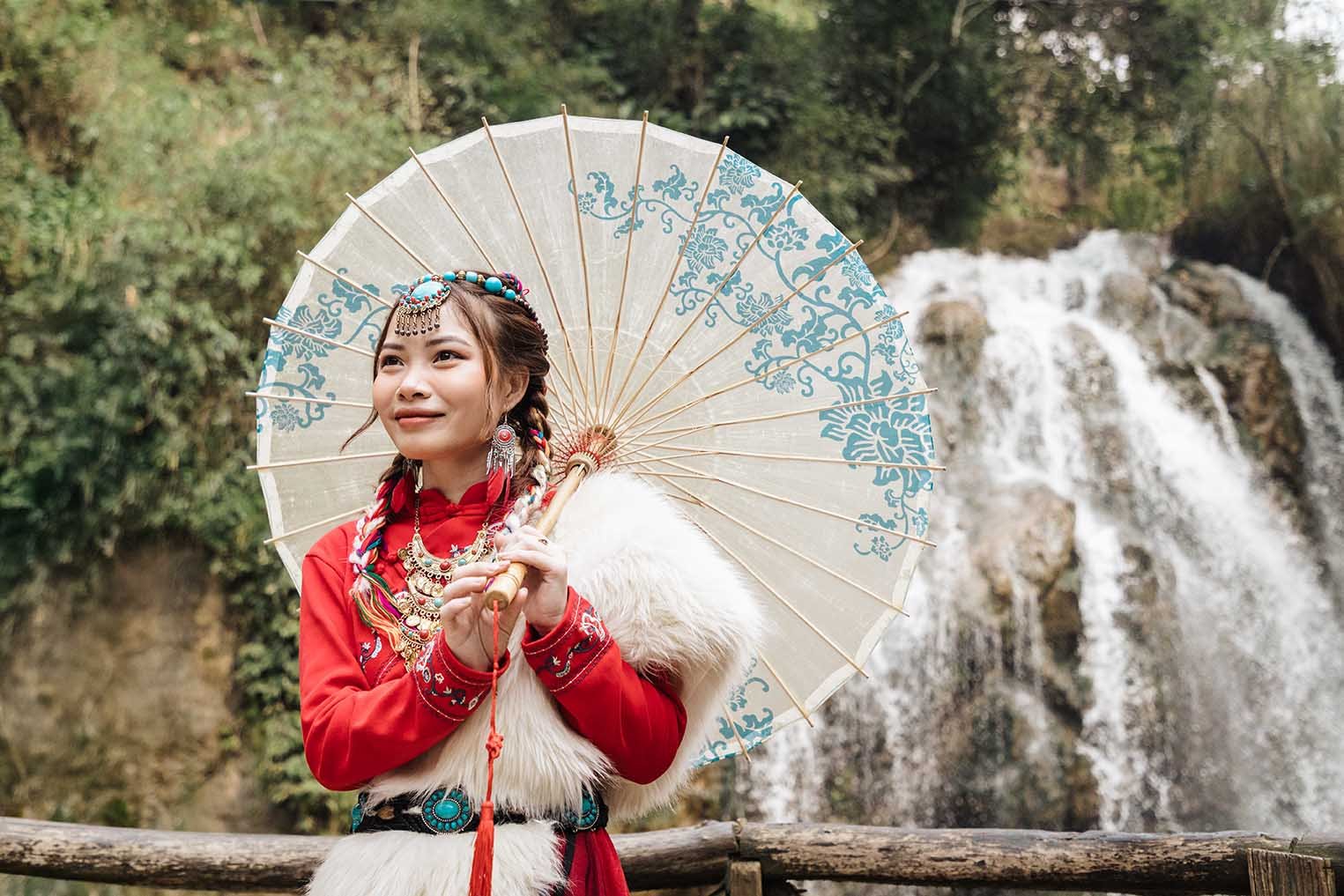Exploring Cat Cat Village: Top Things to Do in Sapa
Cat Cat is a small rural village in Sapa, offering breathtaking views of mountains, valleys, rivers, and rice terraces. It is one of the main attractions of Sapa, and well worth a visit. The village is home to the Hmong people, known for their traditional clothing and handicrafts.
Located at the foot of the Hoang Lien Son mountain range, just 2 km from Sapa, the access to Cat Cat is via stairways leading to the famous waterfall, which was once a hydroelectric power plant built by the French in the 20th century. Along the path from the village entrance to the Cat Cat waterfall, you’ll find many souvenir shops and charming cafes.
Read also: What to Do in Sapa: Top 10 Attractions |
1. Admire the Rice Terraces
Cat Cat village offers a privileged view of the rice terraces, with specially designed spots, almost like photo stages, to enjoy the scenery. You can take a break in one of the cafes and restaurants.
The green rice fields of April and May and the golden fields of ripe rice are stunning. We visited in March.
2. Shopping
The entire village is lined with small shops. As you walk down, you will see a variety of products: souvenirs, unique local foods to try, teas to take home, and handmade accessories.
There are also shops selling khang gai, smoked buffalo meat that can be preserved for years. You can watch the entire smoking process. It’s a delicacy for locals.
It’s best to arrive at Cat Cat around 1 PM, or even earlier. This gives you an hour to explore before reaching the waterfall for the 2 PM performances. The steep stairs on the way back can be exhausting.
3. Visit the Cat Cat Waterfall
The Cat Cat Falls is more of a cascade. You’ll hear the roar from afar. It’s beautiful and was used to generate electricity by the French. This story is told through photographs displayed near the waterfall.
Swimming isn’t allowed, but the viewpoint is perfectly placed for admiration. This is also where the local ethnic performances take place.
4. Watch Local Performances
At 2 PM, artistic performances start in front of the Cat Cat Waterfall, showcasing traditional dances, music, and customs from the local ethnic groups. The setting, with the waterfall as a backdrop, is spectacular!
Read also: What to Do in Ta Phin, Sapa | Sapa Market, Vietnam
5. Learn about Local Handicrafts
As a predominantly Hmong village, you can visit a family’s home along the way to see the indigo dyeing process of their traditional clothes. Your guide can explain the entire process and show you the family’s winter-ready house.
Near the waterfall, women from the local minority groups demonstrate their craftwork—wax resist dyeing, weaving, basketry, and embroidery. You can also purchase these handmade items.
6. Take Photos in Traditional Clothes
Locals love taking pictures in traditional clothing, though it’s often Mongolian, Thai, or inspired by popular TV series rather than Vietnamese garments. However, you can rent traditional Vietnamese outfits starting at 80,000 VND, and even get your makeup done.
Among the photo backdrops are large bamboo waterwheels that once used the water’s force to grind rice. Nowadays, they serve more as props than for their original purpose.
IS CAT CAT WORTH VISITING?
Yes, Cat Cat is well worth visiting in Sapa. Although it is touristy, we only saw local tourists. The cultural performances at the waterfall are unique to this location. It’s a great opportunity to learn about the differences among ethnic minorities and appreciate their art.
The entire space feels like a large park filled with shops. The Vietnamese love to take photos, so everything is designed as a giant backdrop, with nests, stairs, flowers, and bridges. It’s their style!
When planning your visit to Sapa, do Lao Chai and Ta Van in the morning, then visit Cat Cat in the afternoon. Reserve 2 to 3 hours for this village to see the best of Sapa in one day.
HOW TO GET TO CAT CAT
Cat Cat village is located about 2 km from the center of Sapa. You can walk, take a taxi, or hire a motorbike taxi, always going downhill to the entrance. A taxi costs around 100,000 VND, while a motorbike taxi charges 20,000 VND per trip.
We went with a guide in a car who dropped us off and picked us up. If that’s not your case, I recommend walking downhill and taking a motorbike taxi back up. They wait near exit 2.
From the entrance to the waterfall, it’s about a 20-minute walk down the stairs. You’ll enter through the main gate, walk down past the shops, and arrive at the waterfall. On the way back, head to gate 2 along the river for an easier return with fewer stairs.
CAT CAT VILLAGE ENTRANCE FEE
All visitors must pay an entrance fee of 120,000 VND, with children paying half price.
The ticket booth is located near the staircase entrance, where security will check the date on your ticket. If you’re visiting without a guide, be sure to ask for a free village map—it will come in handy.
GOING ON A TRIP? THEN BOOK HERE!
Did you know that when you make a booking using the blog’s link, we receive a small commission? You don’t pay anything extra, you get discounts, and you help the Eduardo and Mônica blog produce complete and quality articles.
Help the blog that helps you!
• Accommodation: Booking.com
• Tours and Tickets: Get Your Guide
• Transport: 12go (Asia, Brazil, Europe, and Australia)
"This post is a translated version of the original content from our website www.eduardo-monica.com"
Veja também nosso site em Português: www.eduardo-monica.com






























